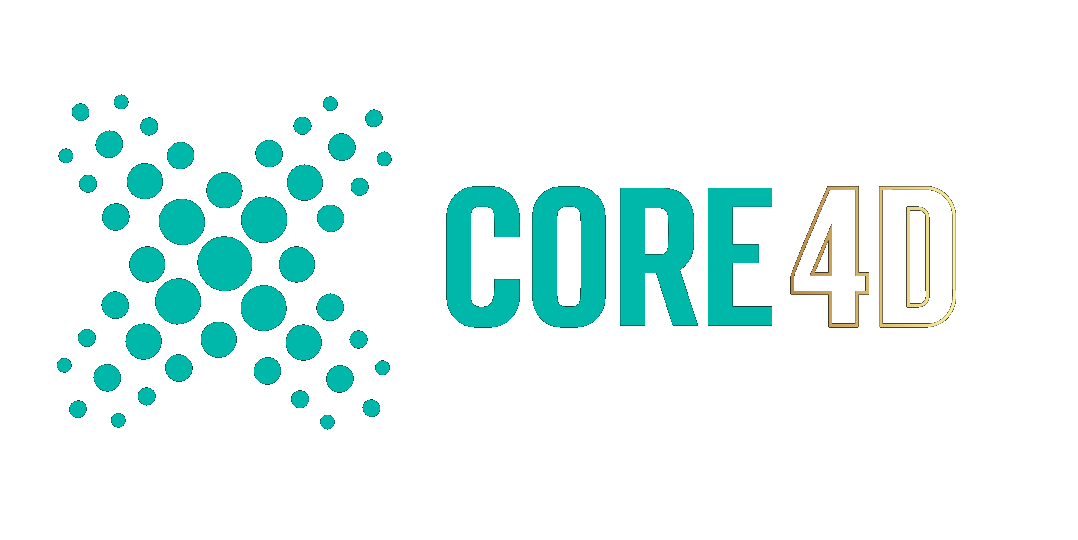Leaderboard
Popular Content
Showing content with the highest reputation on 06/08/2023 in Posts
-
(Probably my first original 3D article) This is a list of 10+1 useful yet overlooked or unappreciated features in C4D. 10) Scene Nodes Scene Nodes made their debut with R23 as an experimental feature drawing developer resources resulting R23 and the next couple of releases deprived from any major features. Due to its unusual for C4D UI, workflow and intuitiveness standards most users tried to stay away from it in a “let others figure it out first” response. None-the-less Scene Nodes are here to stay despite many people’s beliefs it would soon flop. Now many users do not hesitate to use Capsules but still quite few will spend time making their own, propagating the belief that SceneNodes maybe are not that powerful to produce what they expect or compete with other systems like Blender’s GeoNodes or Houdini. The Truth is that behind the scenes more and more people are working with SceneNodes and soon tutorials and new Capsules will be popping more frequently as witnessed with the last couple of releases. 9) Polygon Reduction This little generator is rarely used. Due to its name and function most users will rarely even considering using it because “Who wants to compress their geometry in a pile of ugly mess anyway, especially when Remesh is around to do it better”. Actually the Polygon Reduction can come in handy in abstract modeling, weird animations and my favorite: as an indirect uniform instance distribution. Polygon Reduction has a useful Preserve 3D Boundaries option. So when the Object Surface distribution mode of a Cloner fails to satisfy and you end up hitting the Seed value for half an hour to land a distribution where you don’t have intersecting instances, try to populate your surface uniformly use the Polygon Reduction as an instance in Vertex distribution. If the scale of your instances is not an issue throw a Push Apart Effector. 8 ) Sculpting Although not as powerful as ZBrush is, if you don’t want Forger because you don’t work on a tablet or don’t want a subscription to ZBrush, then this is your best alternative. It includes all the essentials for sculpting plus many advanced tools. It’s a quite complete tool case. Probably the most invaluable feature is to turn your sculpts to a Displacement Texture using the Bake Sculpt. Blender boasts its recent 3.5 release about its VDMs (Vector Displacement Maps) after ZBrush later this year made it possible to copy sculpted details as brushes and reuse them while C4D had it all along since R15. Plus the very useful and overlooked Projection tool. Which can also project tubed meshes ! 7) Camera Calibrator Tag This is another tool most users haven’t ever used myself included. It is used for Camera Mapping and provides many useful parameters and options for a quick camera placement from a reference image. It’s basically the equivalent of Motion Tracker but for still images. 6) Tension Tag The Tension Tag is placed in the Character Tag menu so most users that aren’t concerned with Character Rigging overlook it and don’t know it can also be used for modeling. Although you can achieve the same effects using the Displacer Deformer, the Tension Tag is more preferable for animations when the amount of deformation of a polygon from its initial state alters the Weight Map of the object allowing for local effects on regions of structural stress. Try doing this Reaction Diffusion without Fields! I think it’s faster too. And we have the Tension Tag to thank for this since R17 (I think). 5) Feather Object Right in the middle of this Top 10 list lies the Feather Object. I don’t just rarely see projects that use feathers. I’ve just never seen any feathered projects ever. And I’ve never used that object myself either! I might have seen a scene or two during MAXON’s demo showreels but you never know what percentage of those scenes are C4D. It’s a quite interesting generator with many parameters carefully designed to model any type of plume. It’s also a generator that doesn’t work on geometry like the Hair object but on guides. It essentially generates guides for guides. So if you want to turn any hairy model into a feathered model just put the Hair object under the Feather oblject! (also works for splines) 4) Instance Object Who uses Instance objects, right? Cloners create instances themselves by default why should I need an Instance object ? Maybe it’s used only when you turn a Cloner to an Editable Object. The truth is that the Instance Object can make your scenes a lot lighter when you don’t use a Cloner yet you do use a lot of copies of the same objects. Most users overlook it because the first thing that comes to mind when you need a lot of something is to clone it with the Cloner. Probably the Instance Object is what makes the Cloner work in stealth mode. I'll let the Master Shapiro show you one practical use of this object. 3) Smoothing Deformer Oh the Smoothing Deformer! With a bent tube as an icon (a flat iron R25+), it doesn’t really excite. Also the name doesn’t excite either. Usually users when they want to smooth things out they’ll use the Subdivision Surface generator (SDS). But what if you don’t want to increase the number of your polygons? Yes you guessed right. But wait, what are the Relax and Stretch modes? Stretch will try to maintain the overall shape and volume of your object. So any hard edges will be preserved while polygons try to be of homogenous area. The Relax is the most interesting one. People ask all the time how to make stills with realistic cloth wrinkles and will resort to cloth simulations or even sculpting… Look no further, this is your salvation! With just a few mindless brushstrokes with the Brush tool this deformer will blow your mind. 1) Plane under SDS. 2) Plane without SDS, just play with the Brush (Mesh->Transform Tools [M~C]), 3) SDS again 4) Just apply the deformer in Relax Mode. 2) MoSpline Turtle My favorite. MoSpline is not a rare tool on users arsenal. Who doesn’t like those sexy curves, and the icon is the most elegant in the whole app (talking about the old one). But the Turtle mode is just absent from any C4D project I’ve ever seen. It’s like it doesn’t exist… I guess people see those unintelligible symbols and delete the poor tree before a virus turns C4D into Houdini. The Turtle mode is highly unappreciated. Although it does have room for improvement in its capabilities, what someone can achieve with it is quite impressive and there is no other way to do it (except maybe coding it in Python). Anyone with affection for fractals appreciates this tool. Unfortunately most people love only the colored Mandelbrot type fractals. Line fractals deserve some love too! 1) XPresso Well, what did you expect? Although a lot of users do use XPresso, still very few are well knowledgeable with it. Most users relate XPresso only with Thinking Particles and this is the main reason most users resent XPresso, because it doesn’t deliver easy, fast and intuitive particle setups. There are also many shady corners in XPresso that are rarely used in scenes so most people don’t know how they could even be used. What for should someone use Dynamics nodes or Hair nodes ? Who knows ? Anyhow, XPresso is very powerful tool if you know how to use it, and it has an overlooked cousin feature the Driver Tag that developers made just for those who don’t like XPresso. Bonus Feature Pyroclusters The most underappreciated feature ever. Today it’s totally outdated because we have Pyro. But if you don’t have RedShift or any VDB compatible renderer what will you do? Just look at those clouds! 0 voxels, 0 GPU RAM needed. There are some preset shapes you can use like box and cylinder which I have no idea what practical purpose they serve but the Hemisphere can be used to see clouds from below. The downside is that you don’t have the flexibility Pyro offers because you need a particle setup, and sometimes particles are not enough so you have to use Thinking Particles which leads us back to XPresso. Other limitations follow like that they are not compatible with VDBs because they use apperceptive 3D shading algorithms instead of voxels, so you can’t export them to an other application and that PyroCluster does not work in conjunction with the depth-of-field functionality. Other than that, if you work natively, Pyroclusters can provide some comfort when you need some fluffy clouds or smoke. This is a special case of under appreciation because people do not appreciate the ingenuity used for this one-of-a-kind feature. I should be making a YT video 🤔1 point
-
I was watching a YouTube tutorial on the Geneva Lock, and the animation part was a real mish-mash of illogical XPresso and some bad Python. What I'd call the interesting part - the peg and slots interaction - he just used a rangemap and tweaked it until it kinda worked. The poster admitted he wished he had the math skills to do an accurate version where everything lined up correctly. Now there's a challenge I couldn't resist ! There's some math in the zip file. geneva.zip1 point
-
Not by material, but you can split it by polygon selections, which in many cases results in the same thing. Split Poly Selections 02.c4d1 point
-
i think this guy should publish a printable version.. maybe he can be co-erced into uploading it to amazon print on demand.. oh he already has it: https://www.amazon.com/dp/19877286101 point
-
Tools -> 'Replace with' is one of the most powerful functions. Change any part of your rig to a different object type, while preserving all connections, substitute a bunch of copies from an imported scene for render instances etc etc. Other one is 'Set Parent' & 'Unparent' instead of dragging & dropping in the hierarchy - move your animated objects to different places in your hierarchy with no hassle.1 point
-
I know it sounds lame, but the functionality of the S key for finding meshes in viewport or object manager is often overlooked and saves me so much time every hour of every day.1 point
-
Althoug with some issues, i would add Motion System and C motion there are almost no tutorials for these two features. Motion system is super powerful if you need to go into mo cap animation and libraries, plus it can be combined with xpresso to create powerfull commands C motion is a tough one, but its greate to generate automatic animations it's funny to see some of these sugestions. I believe xpresso is not un apreciated or overlooked. It's just a bit difficult for starters but it's really powerfull unlike the limited driver tag ehehe. cheers1 point
-
1 point
-
Yes you should !! I would like to add 'Edge to Spline' and the new Relax mode of the Brush tool, which can relax and improve loop evenness / integrity without shrinking the mesh. And at last, the new Thicken tool, which means we don't need to use the previous range of un-optimised compromises like Cloth SDS and Extrudifier. CBR1 point
-
For 10 minutes straight he didn't even once considered to turn the polygons of the sphere to minimum. Even setting the Viewport Mode in Cloner as Points would have better viewport feedback. Trying to build a granular simulation system using polygons is just wrong. Weird that Point Cloud is not documented in the online help. Also weird that Point Cloud has a blue/white icon in contrast to all other orange capsules or green generators...1 point
-
The short answer is, "yes." Many gemstones have complex IOR values. In particular, gemstones with a single IOR>=1.65 have highly complex refractive IOR values that differ for different wavelengths, viewing angles, changes in density based on impurities in the stone, etc. In fact, the single real-world dispersion value, which takes complex IORs at different wavelengths into account, is often touted about (e.g., Abbe value) is just an approximation either based on a single wavelength of light, usually tied to a particular Fraunhofer line (e.g., nD based on the Sodium-D line), or a chart across two such lines, referred to as the the differences in IOR between two pre-defined Fraunhofer lines (e.g., B and G lines) at their respective wavelengths. For your specific case of blood, you can see a graph of the refractive index (eta) and extinction coefficient (kappa) at various wavelengths, at: https://refractiveindex.info/?shelf=other&book=blood&page=Rowe ..., a good site for getting complex IOR curves for various materials.1 point





